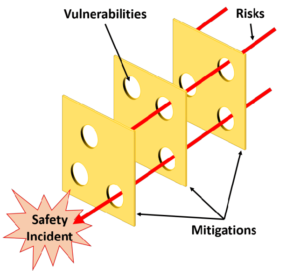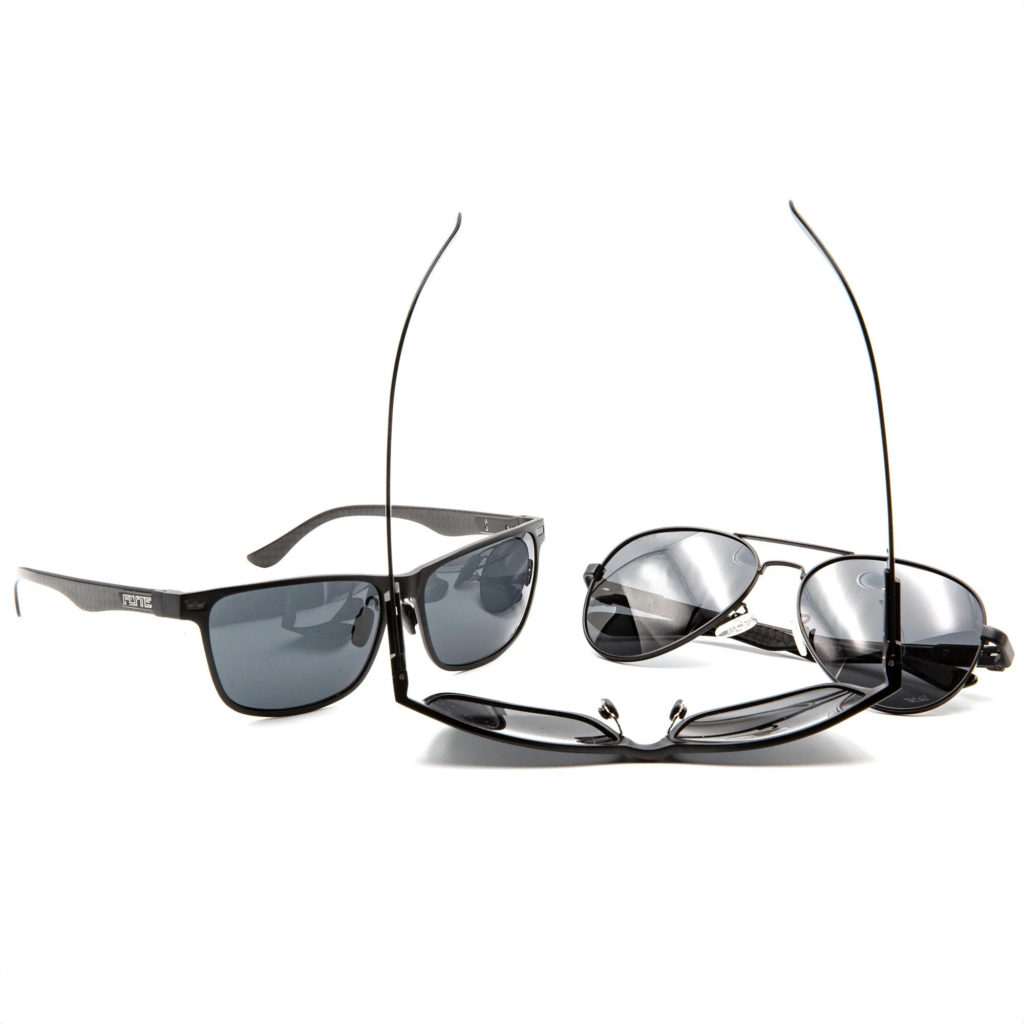Welcome to Week 1 of National Safety Month 2024
Proudly Sponsored by:
You have spent $2000 on a noise cancelling headset so make it count, get the right pair of sunglasses that don’t ruin the experience. In the cockpit, where focus and clarity are paramount, FLYTE sunglasses emerge as the optimal solution.
Engineered with aviation professionals in mind, FLYTE’s design prioritises seamless integration with noise-cancelling headsets. Our thin carbon fibre temples glide beneath the headset padding, preserving the crucial seal that blocks out distractions and ensures you don’t miss that important radio call.
The rigours of long navs demand unwavering comfort. FLYTE’s feather-light frames eliminate pressure points and banish headaches, even after hours of wear. But comfort doesn’t mean compromising on safety. FLYTE’s lenses provide robust UV400 protection, shielding your eyes from the sun’s harmful rays, while their impact-resistant construction offers an additional layer of security.
Choose between non-polarised options for your flying needs or polarised for other activities like driving, we have the perfect pair for you. With FLYTE you can experience the exceptional clarity and unwavering protection that pilots rely on no matter what you are doing. We our sunglasses your vision will remain as clear and unobstructed as your flight path.
Pre-flight decision making: Your adventure starts before takeoff
“Decision making starts prior to flight”— and sometimes, that’s the most critical part of your adventure.
As pilots in Australia, we have the privilege of navigating some of the most breathtaking and diverse landscapes on Earth, from the rugged outback to our picturesque coastlines. However, the unique challenges presented by Australia’s geography and climate mean that pre-flight decision making is not just important—it’s essential.
Australia’s environment presents unique challenges that demand careful pre-flight preparation. Pilots must contend with vast remote areas where services; whether emergency, or radio/ communication may be limited. The sheer expanse of unpopulated terrain means that in the event of an emergency, assistance could be hours away. Weather extremes add another layer of complexity, from tropical cyclones in the north to sudden cold fronts in the south. Understanding and anticipating these weather patterns is crucial for safety.
Unique airspace regulations are also a factor, particularly around busy Class C & D aerodromes and military zones. Familiarity with the airspace in which we fly is essential to avoid inadvertent violations. Additionally, Australia’s abundant wildlife increases the risk of bird strikes, especially during migration seasons. Flying over varied terrain—deserts, mountains, and oceans—requires careful consideration of altitude, navigation, and emergency procedures. Each presenting its own set of challenges that can affect flight performance and safety.

The stepping stones of a safe flight
Effective flight planning involves more than plotting a course from point A to point B. The sometimes vast distances between airports and in some situations availability of fuel in remote areas necessitate careful route selection. Pilots must account for high temperatures that can affect aircraft performance, especially in the outback where density altitude becomes a significant factor.
Staying updated with the Civil Aviation Safety Authority regulations and specific local airspace rules is essential. Regulatory compliance isn’t just about staying legal; it’s about ensuring the safety of everyone in the sky. Gathering essential information like NOTAMs is crucial for updates on temporary military exercises or restricted areas.
The Human element
We’re all familiar with the IMSAFE checklist. Although a quick search online may provide some variation the mnemonic, it typically includes Illness, Medication, Stress, Alcohol, Fatigue, and Eating as self assessment items that should be considered as part of your pre flight decision making. A pilot’s physical and mental state can significantly influence the safety of a flight. Being honest with yourself during this evaluation can prevent accidents before they have a chance to happen.
Fatigue is a significant concern, especially given the long distances and at times un landscapes of Australian flights. Extended periods in the cockpit can lead to both physical and mental fatigue. Environmental factors such as heat and dehydration can exacerbate feelings of tiredness, making fatigue management a critical component of pre-flight decision making.
Eye fatigue is another overlooked hazard. The intense Australian sun can cause glare off the desert sands or ocean, straining the eyes. Flying over featureless terrain can lead to decreased visual alertness. Mitigation strategies include planning rest periods, especially when flying across time zones, and using sunglasses with proper protection. Staying hydrated by carrying ample water is essential, as dehydration can worsen fatigue.
Cognitive preparedness involves more than just physical readiness. Pilots must be vigilant about changing weather conditions, such as sudden dust storms or fast moving cold fronts. Decision making skills are crucial, especially when options may be limited in remote areas. Being prepared to divert even if not convenient can mean the difference between a safe landing and a dangerous situation.
Weather or Not to Fly
Detailed weather briefings are crucial. Utilising the official methods such as NAIPS as well as the Bureau of Meteorology’s aviation specific forecasts and warnings provides pilots with up to date information on weather patterns.
Understanding weather systems is critical. For those further north, they need to be aware of cyclones and intense thunderstorms. Whilst for those that fly further south, cold fronts can bring rapid weather changes. Making the go/no-go decision involves setting limits that are appropriate for you personally and may be more conservative that the legal limit. Identifying suitable alternate airports is vital, keeping in mind that facilities may be limited in remote areas.
Aircraft Readiness
A thorough pre-flight inspection is more than a routine; it’s a necessity. In remote areas, ensuring fuel is free from contaminants is crucial, as fuel quality can vary. Verifying that the aircraft is equipped for desert or tropical conditions, as needed, can prevent in-flight issues. Understanding aircraft limitations, such as how high temperatures affect performance, is essential. Being cautious with weight, considering additional supplies like water and survival gear, ensures the aircraft operates within safe parameters.
Plan B (and possible C & D)
Having alternate plans is not just smart—it’s essential in the Australian context. Over remote areas, identifying suitable terrain for emergency landings can be a lifesaver. Ensuring you have reliable communication equipment, including Emergency Locator Transmitters (ELTs) and possibly even satellite phones, can make all the difference in an emergency situation.
Basic knowledge of outback survival can be invaluable. Equipping your aircraft with comprehensive first aid supplies and survival gear is a part of responsible flying. Being prepared for unforeseen circumstances enhances safety for both the pilot and any passengers. A great reference is the Emergency section of the ERSA.
The Psychological Aspect of Decision Making
Recognising cognitive biases is an important aspect of pre flight decision making. Most of us have heard the term “Get there -itis,” or the urge to continue on despite adverse conditions can be dangerous. Even if you’ve flown a route before, remaining vigilant to new hazards is essential. Using a methodical approach such as DECIDE (Detect, Estimate, Choose, Identify, Do, Evaluate) or AGRADE (Aviate, Gather, Review, Analyse, Decide & Evaluate) mnemonics can assist with problem solving, as typically we don’t make the best decisions under duress.
Technology and Automation
Leveraging modern tools like GPS navigation or EFBs can greatly assist in featureless locations. Automatic Dependent Surveillance-Broadcast (ADS-B) technology improves situational awareness in regions with limited radar coverage. However, avoiding over reliance on technology is crucial. In remote areas, backup navigation methods are important, and equipment checks should ensure all technology is functioning before departure. Additionally ensure electronic equipment such as tablets are not left in the direct sun as this is a sure way to have them fail; generally at the worst possible time.
Remember, every flight is a new adventure that begins on the ground. The skies may be vast and inviting, but they require us to be prepared and vigilant. So, before you next take to the air, ask yourself: Have I done everything to ensure this flight is as safe as possible?
Fly smart, fly safe!
Grate ways to fly safely: Understanding human error with the Reason model
Let’s face it, we’re all human and we’ve all made mistakes. Even the most experienced pilots can slip up during pre-flight checks. But here’s the good news: understanding why these errors happen is the first step to preventing them. That’s where the James Reason Model comes in. You may know it as the Swiss cheese model. It gives us a simple way to think about safety and how to make flying safer for everyone.
Imagine stacking slices of Swiss cheese. Each slice represents a layer of defence against accidents—like training, procedures, equipment checks, and so on. The holes in the cheese are the weak spots in those defences. Most of the time, these holes don’t line up, so if one layer misses something, the next layer catches it. But sometimes, the holes line up perfectly (or in this instance, wrong!), and that’s when an error can slip through all the layers, leading to an accident.

Active Errors
These are the immediate mistakes we might make—like forgetting to check the fuel, misreading the weather, or skipping a step in the checklist. They’re usually easy to spot but can have direct consequences on your flight.
Latent Conditions
These are hidden issues lurking in the background—like outdated procedures, poor communication, or lack of training. They might not cause a problem right away, but they set the stage for active errors to happen.
How does this fit into my pre-flight decision making?
Pre-flight time is when we’ve got multiple safety layers in action. Here’s how the Reason Model plays out:
- Be one with your checklist: They help ensure you don’t miss any crucial steps. Skipping them or rushing through creates gaps in your safety net.
- Stay on top of the weather: Always get the latest weather updates. Relying on old or incomplete info adds holes to your defences.
- Don’t cut corners: A thorough aircraft inspection catches mechanical issues before they become big problems. Cutting corners here can let serious issues slip by.
- Check in with Yourself: Feeling tired, stressed, or distracted? Your personal state affects your ability to make good decisions. Ignoring this widens the holes in your safety layers.
When these gaps line up—like skipping the checklist, using outdated weather info, rushing the inspection, and flying while tired—that’s when accidents can happen.
Say cheese to safer flights
The key takeaway from the Reason Model is that accidents are rarely the result of a single error. Instead, they’re usually caused by a series of small mistakes that align to create a bigger problem. By paying attention to each part of the pre-flight process, we can close those holes in the Swiss cheese and make flying safer for everyone.
Safe flying out there!
PARTICIPATE TO WIN!
Read and watch the content above, then enter your details and the hidden code word to enter our Week 1 prize draw!
YOU COULD WIN ONE OF THE FOLLOWING PRIZES*
FIRST PRIZE: iPad Mini 64GB + OzRunways Subscription
Sponsored by RAAus and OzRunways
Valued at $1,278
SECOND PRIZE: Garmin D2 Air X10 Aviator Smartwatch
Sponsored by Garmin
Valued at $910
THIRD, FOURTH AND FIFTH PRIZE: FLYTE Sunglasses
Sponsored by FLYTE
Valued at $245 each



*Applicants must hold a current Flying Membership or Non-Flying Membership in order to win the first prize.
